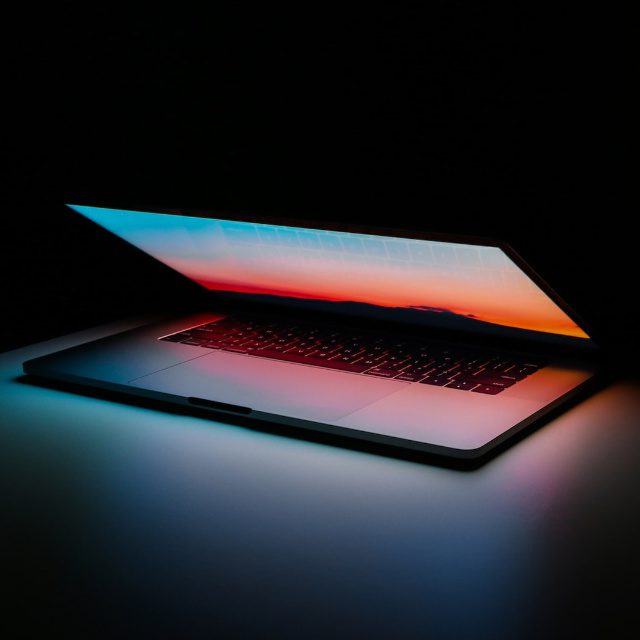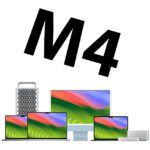When using an Apple MacBook (Air / Pro) for the first time, you might be wondering if there are certain things to consider. It could also be that you should avoid some things when using the laptop. In this post, you'll find MacBook usage pointers and a few tips for anyone transitioning from Windows to macOS. Please note that tips and tricks from the vastness of the Internet are mixed with personal experience, resulting in a list of recommendations that is certainly incomplete and partly subjective. If you have other tips and tricks, please leave a nice comment.

Chapter in this post:
- 1 General recommendations for using the Apple MacBook Air / Pro
- 2 The Mac is a boring machine that just works
- 3 Take good care of the charger and charging cable
- 4 A few tips for switching from the Windows PC to the Apple Mac
- 5 Hardware: What to avoid when handling the MacBook
- 6 tips for cleaning the Apple MacBook
- 7 Software: What to avoid on Apple computers
- 8 software you don't need on a new MacBook
- 9 software we recommend for new Mac users
- 10 Should I install the latest macOS version every fall?
- 11 More reading to get started with Mac usage
- 12 Similar posts
General recommendations for using the Apple MacBook Air / Pro
To put it simply, one can say that new users of the Apple MacBook Pro or Apple MacBook Air do not have to worry too much. As long as you treat the device like the expensive product it is, it will serve you well. This means that handling the MacBook fairly carefully and avoiding damage are the most important points in everyday use.
You don't even have to shut it down regularly when you're done with work - closing it is actually enough. If there are bugs or updates, you should of course restart it. And also make sure that the battery is never discharged to 0%. A charge between 40% and 80% is good. When closed and without any accessories connected, it can even be transported when it is not in use – for example in a backpack, without it overheating.
The Mac is a boring machine that just works
After the regular setup, the MacBook does not have to be equipped with any additional programs, tidying assistants or other tuning software. The proprietary technology as a coordinated combination of hardware and software ensures that the device works well out of the box. There's also a lot less customization on macOS than on Windows or Linux -- while that's a shame for fans of device and system customization, it's good for anyone who just uses technology that works and wants their work done.
And while I noted above that the device should of course be taken care of and treated like the expensive tech it is, there's no need to be overly cautious either. MacBook devices with an aluminum body are intended for work and mobile use. The daily transport from home to the office or the coworking space is definitely feasible. I recommend a simple neoprene sleeve for this, or a padded fleece sleeve if you want extra security and don't want the MacBook to collide with other objects in the backpack.
Take good care of the charger and charging cable
With older chargers, where the cable was firmly connected to the power supply, the same damage always occurred over time: the cable or its insulation wore out directly at the power supply connection and became brittle. The new USB-C chargers don't have this problem. Nevertheless, these are plastic blocks that should not be treated too harshly. The USB-C charging cables are braided, which makes them durable. Nevertheless, you should take a look at the connections (USB-C and MagSafe 3) and do not kink the cables unnecessarily at the connection points.
A few tips for switching from Windows PC to Apple Mac
I myself only switched from an old Lenovo laptop with Windows to a MacBook Pro with macOS a few years ago as part of my freelance work as an editor and copywriter. That was quite a change. While you can quickly get used to standard key combinations (cmd+C instead of Ctrl+C for copying, for example), I personally missed the ability to drag program windows to the edge of the screen to arrange them. That's why I got mine installed directly Magnet as a window manager and still use the app every day.
Another tip: Don't look for a macOS version for every single Windows app you've used on your PC. Sometimes it helps to change the workflow here and there to work efficiently on the Mac or to carry out the hobby. On the other hand, there are also many programs that are available for both Windows and macOS - from Photoshop and Affinity Photo to Word and Excel to Blender and Krita. For office tasks in particular, I can also use the Apple solutions Pages, Numbers, Keynote and Mail recommend. They're even free.
Hardware: What to avoid when handling the MacBook
Here is a small insert between the software-heavy topics related to the equipment of macOS - with a few tips for dealing with the MacBook hardware. Because even if they are (to a certain extent) robust work machines, there are a few things to consider:
- Do not use the MacBook in direct sunlight. Not only can it heat up, you won't be able to see much on the reflective display.
- Do not place the MacBook in operation on soft surfaces such as pillows, blankets or other upholstery / textiles. These can lead to heat build-up and possibly block the ventilation slots.
- Don't put anything on the device when it's closed. Because that can damage the display. Always make sure that nothing is on the keyboard, trackpad or other case when you close the laptop.
- Doesn't lift the MacBook when it's open by the screen, but only by the thicker part of the case where the keyboard and the like are located. This is made for transport.
- Keep the MacBook as clean as possible so that no dust, crumbs or other foreign objects get into the ventilation, the case or the keyboard.
Tips for cleaning the Apple MacBook
To keep dust off the MacBook or to remove it from the keyboard and screen, the first choice should be compressed air. Blows away everything that can be blown away. If stubborn dust and deposits then need to be removed, use a clean, lint-free cloth moistened with disinfectant or rubbing alcohol. Not only does this have a cleaning effect, these cleaning agents also evaporate faster than water. This way you avoid damage if some of the liquid does get into the MacBook.
Software: What to avoid on Apple computers
As mentioned above, you don't need tuning, cleaning, or other utility software on a new MacBook. Over time, though, it might CleanMyMac X offer, but only marginally. You should definitely avoid installing unnecessary antivirus or other antimalware software. If you don't simply click away the macOS warnings about downloads, are critical of links and email attachments from unknown senders and otherwise see what ends up on your computer, then you are already well protected. If you suspect a malware infestation, Malwarebytes, Bitdefender and similar offers could be a solution. But avoid MacKeeper and other black sheep in the industry.
Software you don't need on a new MacBook
Here is a brief summary of the software and app categories that you can save on an Apple MacBook:
- Cleaning or tuning software that takes care of registry or system debris as well as memory management. Where some of this makes sense on Windows, there's just no need for it on macOS.
- Antivirus and other antimalware software. With careful use, the protective mechanisms implemented by Apple are sufficient. If you accidentally installed something dangerous, solutions like Bitdefender or Malwarebytes can help. But avoid MacKeeper, Avast and similar dubious offers. Research before installing!
- System customizations, skins, mods and similar things are rather rare for macOS. There are a few tools that can simplify use or change things up in other ways, but not nearly as many customization options as under Windows or Linux.
Software we highly recommend for new Mac users
Of course, we're not Apple purists who demonize third-party software on principle. Personally, I like software that makes my Mac use easier. It can also be apps that are offered on the web outside of the official app store - on the developer websites or on GitHub.
For uninstalling apps I use e.g. B. always the AppCleaner. If you're looking for a cheap Photoshop alternative, you've come to the right place Affinity Photo well advised. You can find further app recommendations in a monthly format since June 2021. Here are the previous app recommendations: App tips from June 2021 to December 2022, App recommendations in January 2023 and App recommendations in February 2023.
Should I install the latest macOS version every fall?
One question that may arise when using an Apple MacBook or any other Apple computer (Mac, iMac, Mac Pro, Mac mini, Mac Studio, etc.) for the first time is: should I get the latest one every year? Install macOS version?
Because Apple releases a new major version of the operating system every fall – most recently macOS 11 BigSur, macOS 12 Monterey and macOS 13 Adventure. There are always a few teething problems at the beginning, which is why an immediate upgrade upon release is not necessarily recommended. Especially if you need the MacBook for work. But after two to three months you can install the new system.
On the other hand, what you should always install directly are updates that do not represent a new main version, but rather close security gaps, fix bugs and improve individual functions. Updates for individual apps can also be super important. It doesn't matter whether it's Apple's own apps or third-party programs: if critical security gaps are to be closed with an update, then install them.
More reading to get started with Mac usage
If you are new to the Apple cosmos and would like more information on using the new MacBook or another Apple computer, then feel free to click through the Sir Apfelot Blog. Also look up support.apple.com over. There are numerous support documents from Apple, as well as an online manual for macOS. These sources can already answer many of your questions. You are also welcome to leave a comment with your question or send Jens an email using the blog's contact options. Finally, we would like to recommend the macOS instructions by Anton Ochsenkühn from amac-Buch Verlag - look here.
- Anton Ochsenkühn (Author)
Source: Quora
Related Articles
After graduating from high school, Johannes completed an apprenticeship as a business assistant specializing in foreign languages. But then he decided to research and write, which resulted in his independence. For several years he has been working for Sir Apfelot, among others. His articles include product introductions, news, manuals, video games, consoles, and more. He follows Apple keynotes live via stream.
The page contains affiliate links / images: Amazon.de










hello sir,
You are connected with the CleanMyMac X people and therefore maybe have an idea for the following oddity:
More and more often, IMHO, a rather stupid window opens, which says something like: Your memory is low on xyz, where xyz are typically 3-4 drive rows, with the free memory on the right of the respective row.
If that's "only" 70 GB on a 2 TB drive, then you might think that's ok. But I do find it a bit odd.
But if that's about 600 GB in all rows, then that's no longer nice and whimsical, but kind of broken, right?
That wasn't the case for me before.
Hi Falk! I'd be happy to ask their support, but I don't have an explanation for that either. This background process of CleanMyMac X does not run for me because I only allow selected programs that really need it to run in the background process. That's why I don't know the message at all.
Ah, I just see: You can set this limit yourself. Under CleanMacMac X → Preferences → Notifications
So you can change it to your liking.
First, thanks for your answer!
One might be “Warn when free space is under 100GB”. Which of course often happens with a system partition of 500 GB in total. But you can lower it.
The totally insane warning at 600GB or so might come from "Offer cluttered external drive cleanup" on my 4TB and 5TB external discs. You can't set this, you can only turn it off.
If it comes back, I'll take a screenshot and ask support. Then it's probably best to turn it off.
Exactly... that's how I would do it too. Maybe they need some feedback on which features are annoying. 😂